[ad_1]
❄️ Why Is My Room So Hot? and What Can I Do About It?
The frustration of having one room that’s always hotter than the rest of the house is a common issue for many homeowners.
Understanding the reasons behind this temperature disparity is crucial in finding effective solutions.
❄️ 10 Reasons for a Hot Room

One room in a house might be hotter than the rest for several reasons.
Poor insulation, inadequate air circulation, and direct sunlight exposure are common culprits.
Another possibility is that the room may have more electronic devices or appliances generating heat.
Sometimes, the air conditioning system may not be properly balanced, resulting in uneven cooling.
It’s important to identify the root cause of the issue in order to find an effective solution, such as sealing air leaks or adding additional vents to improve airflow.
Below I’ll review various issues that could be causing you problems.
A. Restricted Airflow
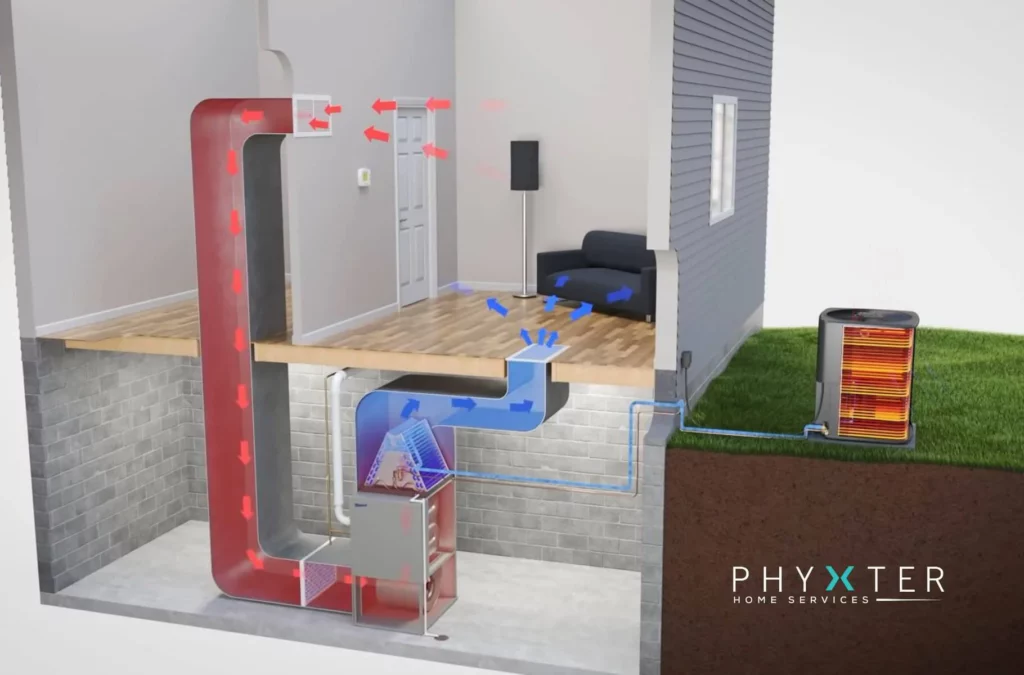
❌ Issues With The Fan and Blower:
Issues with the fan and blower in the air conditioning system can cause one room to be hotter than the others by reducing the amount of cool air that is being circulated throughout the house.
If the fan or blower is not functioning properly, it can lead to restricted airflow and inadequate cooling in certain areas of the house.
Additionally, if the fan or blower is dirty or clogged with debris, or if you have a clogged air filter, airflow will be impeded, reducing the system’s efficiency.
Regular maintenance, changing your air filter, and cleaning your air conditioner can help mitigate issues with the fan and blower and ensure that cool air is evenly distributed throughout the house.
❌ Closed Air Vents:
Closed air vents can cause one room to be hotter than the others by restricting the flow of cool air into that particular room.
When air vents are closed, the air that is being pushed through the ducts is forced to find another path, which can create imbalances in the system’s airflow.
This can result in reduced cooling in some areas of the house, including the room with the closed vent.
Additionally, closed air vents can lead to increased pressure in the ducts, which can put additional strain on the air conditioning system and reduce its efficiency.
To ensure proper cooling throughout the house, keeping all air vents open and unobstructed is important.
❌ Blocked Air Ducts:
Blocked air ducts can cause one room to be hotter than the others by preventing cool airflow into that room.
Air ducts can become blocked due to various reasons, such as the accumulation of debris, dirt, or dust, which can restrict the flow of air.
This can cause uneven cooling throughout the house, with some rooms being cooler than others.
Additionally, blocked air ducts can lead to increased pressure in the system, which can cause the air conditioner to work harder and reduce its efficiency.
Regular cleaning and maintenance of air ducts can help prevent blockages and ensure proper airflow throughout the house, improving overall cooling efficiency.
B. Ductwork Problems
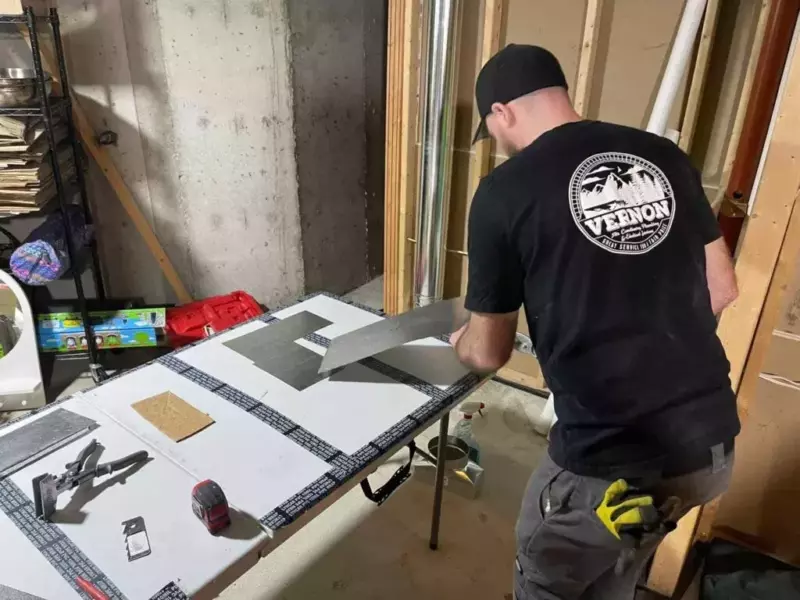
Poorly designed or faulty ductwork can cause one room to be hotter than the others by reducing the amount of cool air that reaches that particular room.
Faulty ductwork can have leaks or gaps that allow cool air to escape, reducing the system’s efficiency and causing uneven cooling throughout the house.
Poorly designed ductwork can also result in imbalanced airflow, with some rooms receiving more cool air than others.
This can result in certain rooms being cooler or hotter than others, depending on the design of the ductwork.
To ensure even cooling throughout the house, it’s important to have ductwork properly installed and maintained, with regular inspections to identify and repair any leaks or damage.
C. Windows Receiving Direct Sunlight
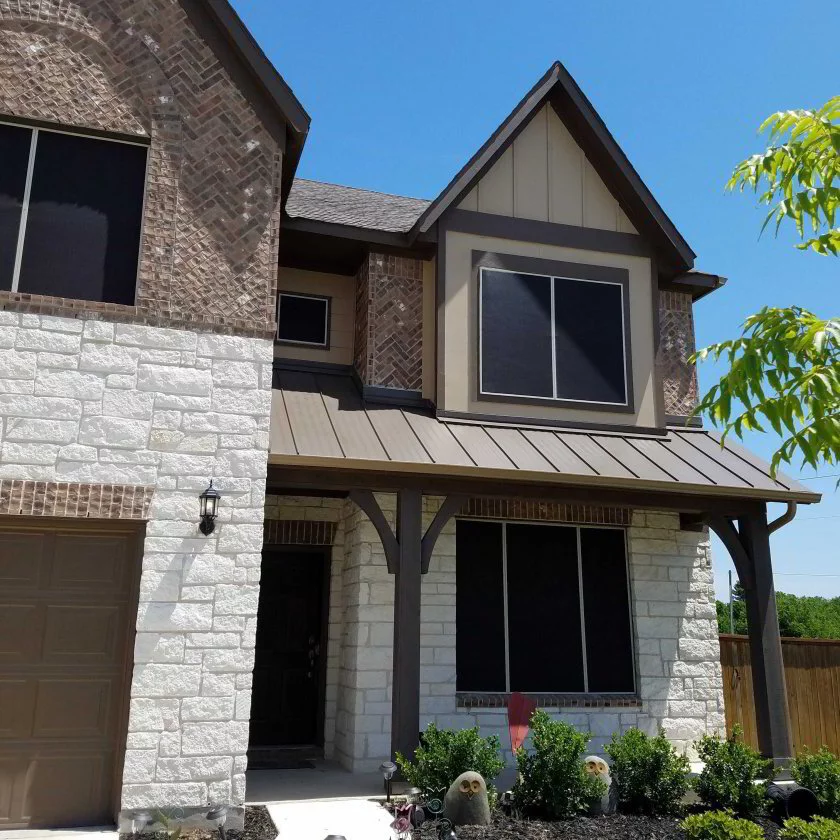
Windows receiving direct sunlight can cause one room to be hotter than the others by allowing excess heat to enter that particular room.
Sunlight passing through windows can increase the temperature in a room, particularly during the summer months when the sun’s rays are strongest.
This can make certain rooms significantly hotter than others, especially those that receive direct sunlight for extended periods throughout the day.
To reduce the amount of heat entering a room, homeowners can install window treatments such as blinds or shades to block the sun’s rays.
They can also consider installing reflective films on windows to reflect sunlight away from the house, reducing heat gain and improving overall cooling efficiency.
D. Oversized or Undersized AC System
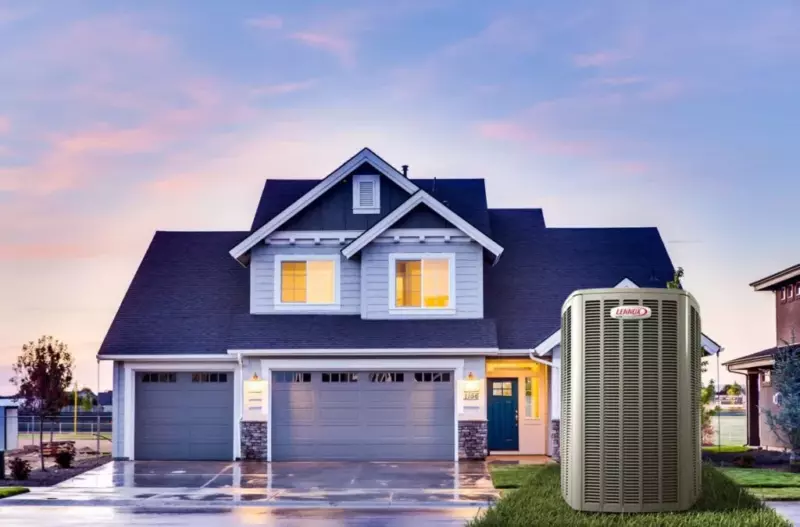
An AC system that is too large or too small for the room can cause one room to be hotter than the others by failing to cool the space properly.
An air conditioner that is too small for the room may not be able to keep up with the cooling demand, resulting in insufficient cooling in that particular room.
On the other hand, an oversized AC system may cool the room too quickly, leading to short cycling and inadequate dehumidification.
This can result in uneven cooling throughout the house, with some rooms being cooler than others.
Proper sizing and installing the air conditioning system can help ensure even cooling throughout the house, with each room receiving the appropriate amount of cooling based on its size and cooling demand.
E. Insufficient Return Air Vents

Inadequate return air vents in a room can cause one room to be hotter than the others by limiting the amount of air that can be circulated through the room.
Return air vents are responsible for pulling warm air from the room and returning it to the air conditioning system for cooling.
If there are not enough return air vents in a particular room, the warm air may become trapped and unable to circulate properly, resulting in air balancing issues and reduced cooling in that room.
This can lead to uneven cooling throughout the house, with some rooms being cooler than others.
To improve cooling efficiency and ensure even cooling throughout the house, it’s important to have adequate return air vents in each room, particularly in larger rooms or rooms with high ceilings.
F. Dirty or Clogged Air Filters
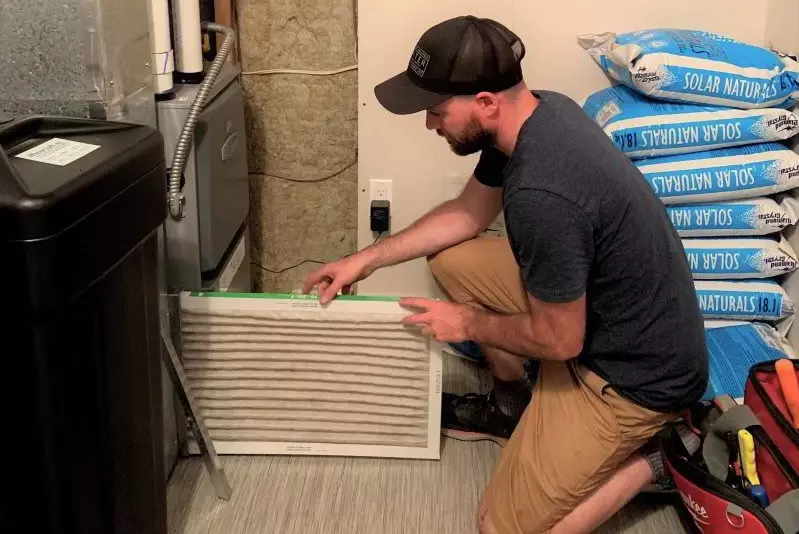
A dirty or clogged air filter can cause one room to be hotter than the others by reducing the amount of cool air that is being circulated throughout the house.
Air filters are responsible for removing dust, dirt, and other contaminants from the air before it is pushed through the heating and cooling system and into the house.
If the air filters are dirty or clogged, they can restrict the flow of air, reduce the system’s efficiency, and reduce cool and conditioned air.
This can result in reduced cooling in some areas of the house, including the room farthest from the HVAC system or the room with the lowest airflow.
Regular replacement or cleaning of air filters can help prevent issues with dirty or clogged air filters and ensure that cool air is evenly distributed throughout the house.
G. How Thermostat Placement Can Affect Room Temperature Imbalances
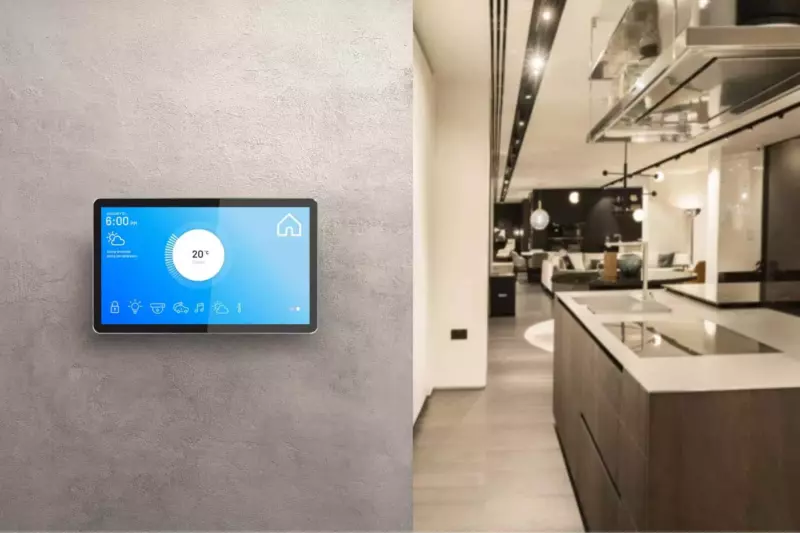
As an experienced HVAC technician, I have encountered situations where the location of a thermostat can contribute to temperature imbalances, resulting in one room being hotter than the others.
It may seem surprising, but the placement of the thermostat plays a crucial role in regulating the HVAC system and influencing temperature distribution.
In the section below, I will explore the ways in which thermostat location can affect room temperature imbalances and provide insights on how to mitigate these issues.
❌ Sensor Bias and Temperature Averaging:
Thermostats typically have built-in temperature sensors that detect the ambient temperature in their immediate vicinity.
However, this sensor can be biased and inaccurate based on location.
If the thermostat is placed in a room that receives more direct sunlight, has poor insulation, or experiences airflow restrictions, it may produce temperature readings that differ from the actual conditions in other areas of the house.
As a result, air conditioning systems might overcompensate or underdeliver heating or cooling to specific rooms, causing temperature imbalances throughout the entire house.
❌ Proximity to Heat or Cold Sources:
The location of the thermostat can inadvertently expose it to nearby heat or cold sources, leading to skewed temperature readings.
For instance, if the thermostat is positioned near a heat-emitting appliance, fireplace, or hot air draft from an exterior door, it can incorrectly influence the HVAC system’s operation.
The system may detect the localized temperature variation and adjust accordingly, neglecting the actual temperature needs of other rooms.
❌ Drafts and Airflow Patterns:
Thermostats placed near drafty areas, such as windows, doors, or vents, can register fluctuating temperatures due to inconsistent airflow patterns.
These hot or cold air drafts create artificial temperature variations that may mislead the thermostat into activating or deactivating the HVAC system when it is unnecessary, impacting the comfort levels in different rooms.
❌ Distance from Zoning Control:
In homes with zoning systems, where separate thermostats independently control different areas, the location of the main thermostat can affect temperature imbalances.
If the main thermostat is installed far away from a particular room that requires additional heating or cooling, the HVAC system might not receive accurate temperature feedback from that room.
Consequently, the system may not adequately address the temperature needs of that specific area, resulting in temperature disparities.
❌ Thermostat Relocation and Zoning Considerations:
To mitigate temperature imbalances caused by thermostat location, consider relocating the thermostat to a more central and representative area within your home.
An interior wall away from direct sunlight and drafts can provide a more accurate average temperature reading.
Additionally, if zoning is implemented, ensure that the thermostats are strategically placed in zones where they can effectively monitor and control temperature variations specific to each area.
The placement of a thermostat can indeed impact room temperature imbalances within a home.
Factors such as sensor bias, proximity to heat or cold sources, drafts, airflow patterns, and distance from zoning control all contribute to potential discrepancies in temperature readings.
By understanding these influences and taking appropriate actions, such as relocating the thermostat or implementing zoning systems, homeowners can mitigate temperature inconsistencies and achieve optimal comfort throughout their living space.
Consulting with a professional HVAC technician can provide valuable insights and guidance for finding the ideal thermostat location and addressing temperature inconsistencies effectively.
H. How Electronics and Appliances Impact Room Temperature Imbalances
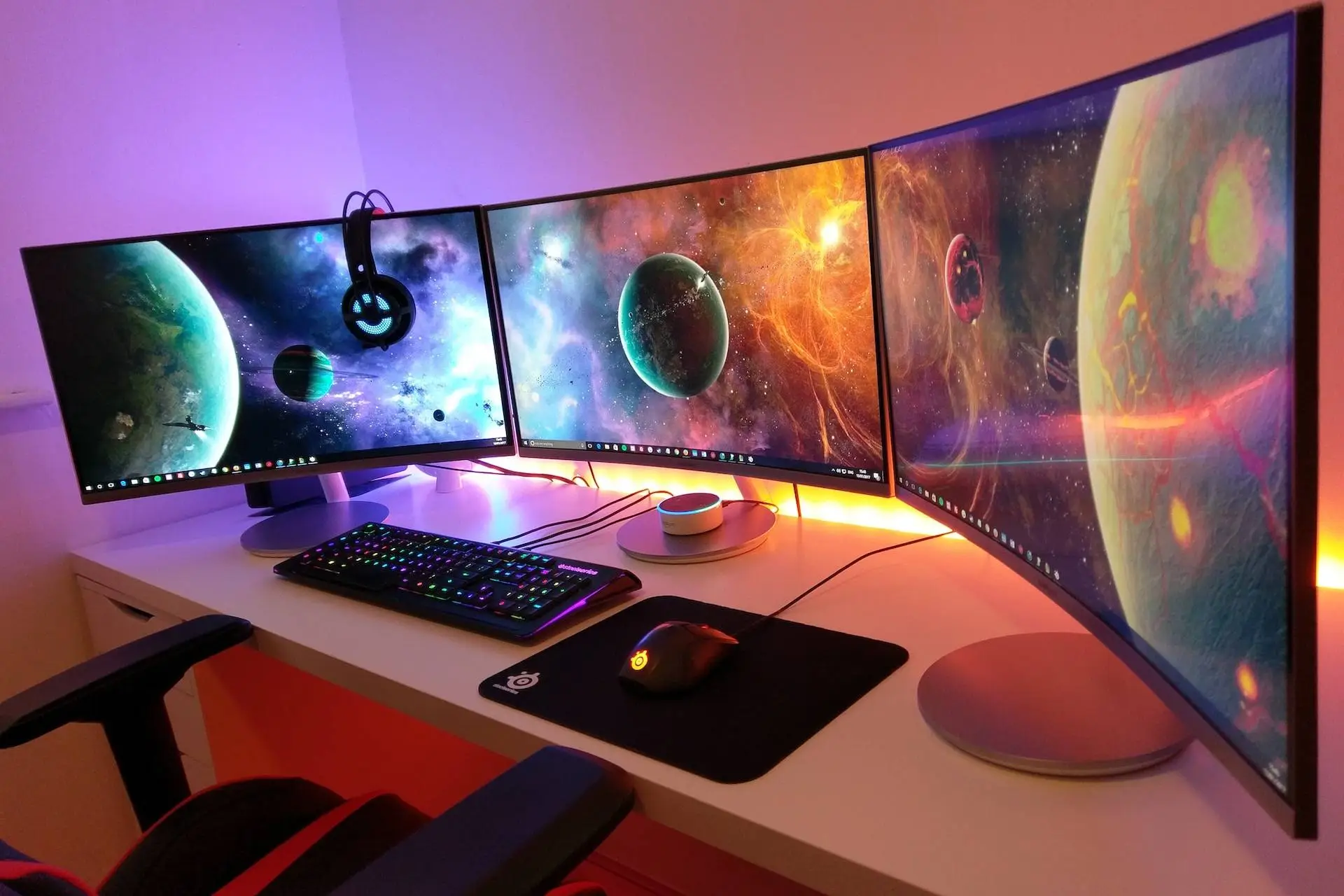
When it comes to temperature imbalances within a home, electronic devices and appliances can often be overlooked as potential contributors.
However, electronics generate heat and can significantly impact a room’s thermal dynamics, leading to temperature variations throughout the house.
In the section below, we will explore how electronics and appliances can make one room hotter than the others and provide insights on managing their heat output for a more balanced and comfortable environment.
❌ Heat Generation:
Electronic devices and appliances produce heat as a byproduct of their normal operation.
Common culprits include computers, televisions, gaming consoles, refrigerators, ovens, and lighting fixtures.
In rooms where these devices are concentrated or frequently used, the cumulative heat generated can significantly raise the ambient temperature, creating an imbalance compared to other areas of the house.
❌ Insufficient Ventilation:
Heat-emitting devices require proper ventilation to dissipate heat.
If a room lacks adequate airflow or ventilation, the accumulated heat from electronics and appliances can become trapped, increasing localized temperature.
Limited air circulation exacerbates the heat buildup and contributes to temperature imbalances within the home.
❌ Proximity to Thermostat:
The location of electronics and appliances in relation to the thermostat can affect temperature readings and the operation of the HVAC system.
If heat-producing devices are placed near the thermostat, their influence can skew the temperature measurement, leading to inaccurate heating or cooling control.
The thermostat may respond to the higher local temperature, neglecting the actual comfort needs of other rooms and causing imbalances in temperature distribution.
❌ Insulation and Heat Retention:
In rooms with inadequate insulation or poor sealing, the heat generated by electronics and appliances can accumulate and become trapped.
Insufficient insulation in walls, windows, or doors allows heat to seep into the room and remain there, causing temperature imbalances.
Ensuring proper insulation and sealing is essential to minimize heat transfer and maintain consistent temperatures throughout the house.
❄️ Solutions for Managing Heat Output:
To address temperature imbalances caused by electronics and appliances, several strategies can be employed:
? Proper Ventilation:
Ensure the room with heat-emitting devices has sufficient ventilation, including open windows, fans, or exhaust systems. Proper airflow helps dissipate the accumulated heat and maintain a balanced temperature.
? Device Placement:
Strategically position electronics and appliances away from the thermostat and in areas with adequate ventilation.
This prevents their heat output from directly affecting temperature measurements and the operation of the HVAC system.
? Smart Power Management:
Utilize power-saving features and energy management settings on electronic devices to reduce heat output.
Additionally, consider turning off or unplugging devices when not in use to minimize unnecessary heat generation.
? Heat Dissipation Aids:
Use cooling solutions such as laptop cooling pads, heat sinks, or ventilation mats to enhance the heat dissipation capabilities of electronic devices, preventing excessive heat buildup in the room.
Electronic devices and appliances can significantly impact room temperature imbalances due to their heat-generating nature.
Insufficient ventilation, proximity to the thermostat, and inadequate insulation contribute to localized temperature increases.
By promoting proper ventilation, managing device placement, implementing smart power management practices, and utilizing heat dissipation aids, homeowners can mitigate the heat output of electronics and appliances, creating a more balanced and comfortable environment throughout their homes.
I. How Poor Home Insulation Can Create Hotter Rooms
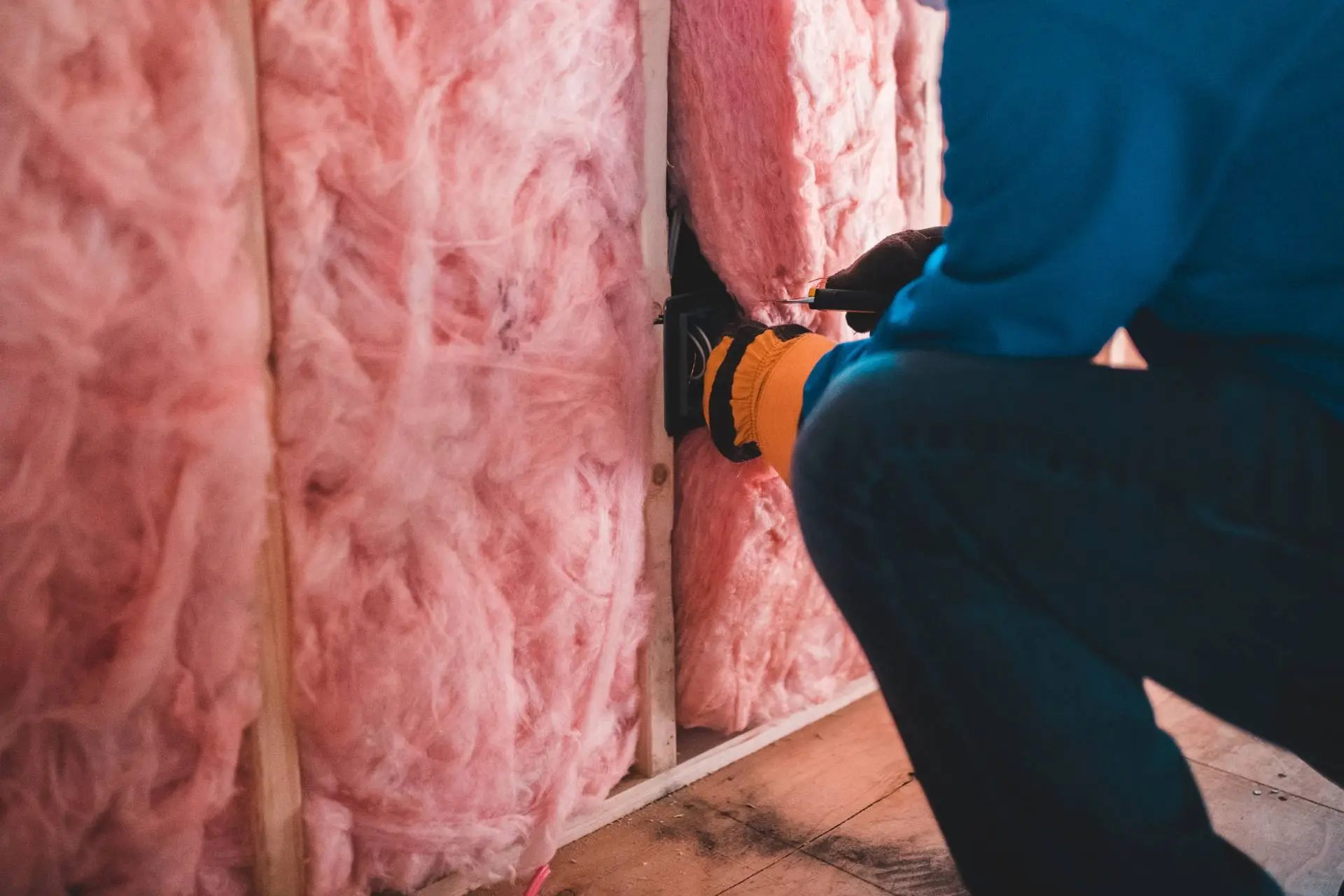
Poor home insulation is a common culprit behind temperature imbalances within a house.
When insulation is inadequate or improperly installed, it can lead to variations in temperature from room to room, with some areas becoming noticeably hotter than others.
In this section, we will explore the reasons why poor home insulation can result in one room being hotter than the others and discuss the importance of effective insulation for maintaining a comfortable living environment.
❌ Heat Transfer:
In rooms with poor insulation, heat transfer occurs more readily.
During hot weather, the sun’s radiant heat penetrates through windows, walls, and the roof, increasing the temperature inside the room.
Without proper insulation to resist heat transfer, the affected room absorbs and retains more heat, leading to higher temperatures compared to well-insulated rooms.
❌ Inadequate Thermal Barrier:
Insulation acts as a thermal barrier, preventing the transfer of heat between the interior and exterior of a home.
When insulation is lacking or improperly installed, it fails to restrict the entry of external heat into the room or prevent internal heat from escaping.
As a result, the room becomes susceptible to heat gain and may experience higher temperatures than other well-insulated areas.
❌ Air Leakage and Infiltration:
Poorly insulated rooms often suffer from air leakage and infiltration.
Gaps, cracks, and inadequate sealing around windows, doors, electrical outlets, or HVAC ducts allow warm air from outside to seep in while conditioned air escapes.
This warmer air influx elevates the room’s temperature, contributing to the imbalance compared to properly insulated spaces.
❌ Insufficient Attic Insulation:
Insufficient insulation in the attic can play a significant role in temperature imbalances within a home.
Heat tends to rise, and if the attic lacks proper insulation, it becomes a reservoir for excess heat.
As a result, rooms located directly beneath the poorly insulated attic may experience higher temperatures as the heat from above permeates downward.
❌ Impact on HVAC Efficiency:
When one room is significantly hotter due to poor insulation, the HVAC system may be forced to work harder to maintain a consistent temperature throughout the house.
This increased workload leads to higher energy consumption and may strain the system, affecting its overall efficiency and lifespan.
❄️ Solutions for Improving Insulation:
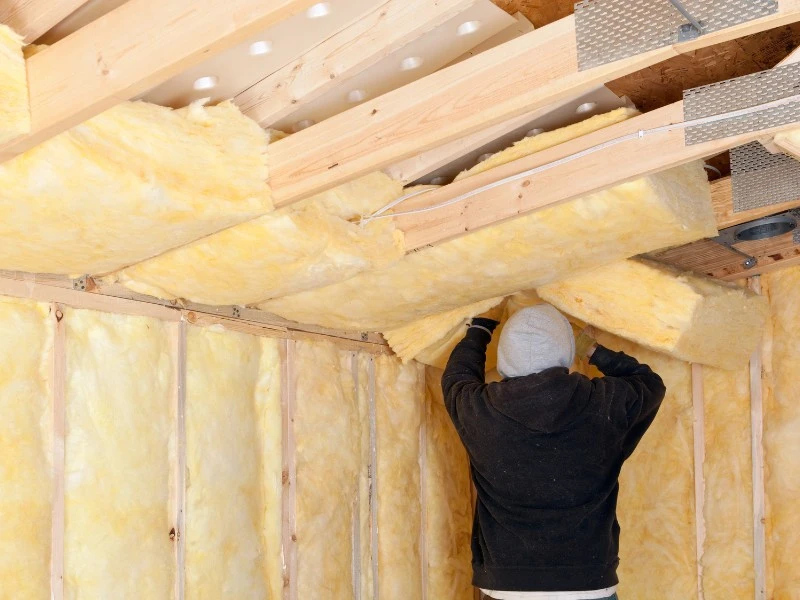
To address temperature imbalances caused by poor home insulation, consider the following solutions:
? Insulation Assessment:
Conduct an insulation assessment of your home to identify areas of concern and determine where insulation improvements are needed.
This may involve inspecting walls, attics, basements, and crawl spaces.
? Professional Insulation Installation:
Engage the services of a professional insulation contractor to ensure proper insulation installation.
They can recommend and implement suitable insulation materials and techniques to maximize thermal efficiency.
? Air Sealing:
Seal any gaps, cracks, or openings contributing to air leakage and infiltration.
This includes weatherstripping windows and doors, sealing ductwork, and using caulking or expanding foam to close gaps around electrical outlets and other openings.
? Attic Insulation Upgrade:
Pay special attention to the insulation in the attic, as it plays a crucial role in preventing excessive heat transfer.
Consider adding or improving insulation in the attic to reduce heat gain and maintain a more balanced temperature throughout the house.
Poor home insulation can lead to one room being hotter than the others, disrupting a home’s overall comfort and energy efficiency.
Heat transfer, inadequate thermal barriers, air leakage, and insufficient attic insulation all contribute to temperature imbalances.
By addressing insulation issues, conducting proper air sealing, and upgrading attic insulation, homeowners can create a more comfortable living environment, promote energy efficiency, and restore temperature balance across all rooms.
Consulting with insulation professionals can provide valuable guidance and assistance.
J. How Home Additions Can Create Hotter Rooms
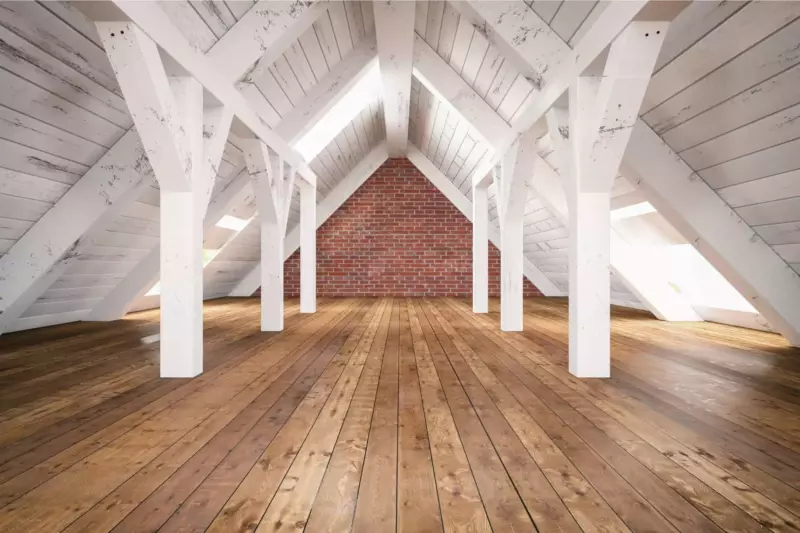
The addition of new living spaces to a home can bring excitement and functionality.
However, it can also introduce unexpected challenges, such as temperature imbalances.
It is not uncommon for a home addition to result in one room being hotter than the others.
In this section, we will explore the factors contributing to this phenomenon and discuss strategies to mitigate the temperature disparity, ensuring a comfortable environment throughout your home.
❌ Inadequate HVAC Capacity:
When a home addition is constructed, the existing HVAC system may not be designed to accommodate the added space’s increased heating and cooling demands.
This imbalance can result in inadequate airflow and temperature control, leading to hotter rooms within the new addition compared to the rest of the house.
❌ Inefficient Ductwork:
In some cases, the existing HVAC ductwork may not extend to the new addition or may be improperly sized or balanced.
As a result, the airflow to the added room may be insufficient, causing inadequate cooling or heating. Insufficient airflow can lead to temperature imbalances, with the new room being noticeably hotter.
❌ Sun Exposure and Insulation:
If the home addition has more windows or receives greater exposure to direct sunlight than other parts of the house, it can increase heat gain.
Inadequate insulation in the new addition, especially in walls, ceilings, or windows, can exacerbate the heat transfer, making the room hotter than the others.
❌ Ventilation Challenges:
A home addition may have unique ventilation challenges due to its design or location.
Limited airflow, poor ventilation, or improper placement of air vents can hinder air circulation, preventing heat dissipation.
Inadequate ventilation in the new room can cause it to retain heat, leading to temperature imbalances.
❌ Zoning and Thermostat Placement:
If the home addition is not properly integrated into the existing zoning system, it may not receive adequate heating or cooling.
This can result in a hotter room compared to other areas of the house.
Additionally, if the thermostat controlling the HVAC system is located far away from the new addition, it may not accurately sense and respond to the temperature needs of the added space, further contributing to the temperature imbalance.
❄️ Solutions to Mitigate Temperature Imbalances:
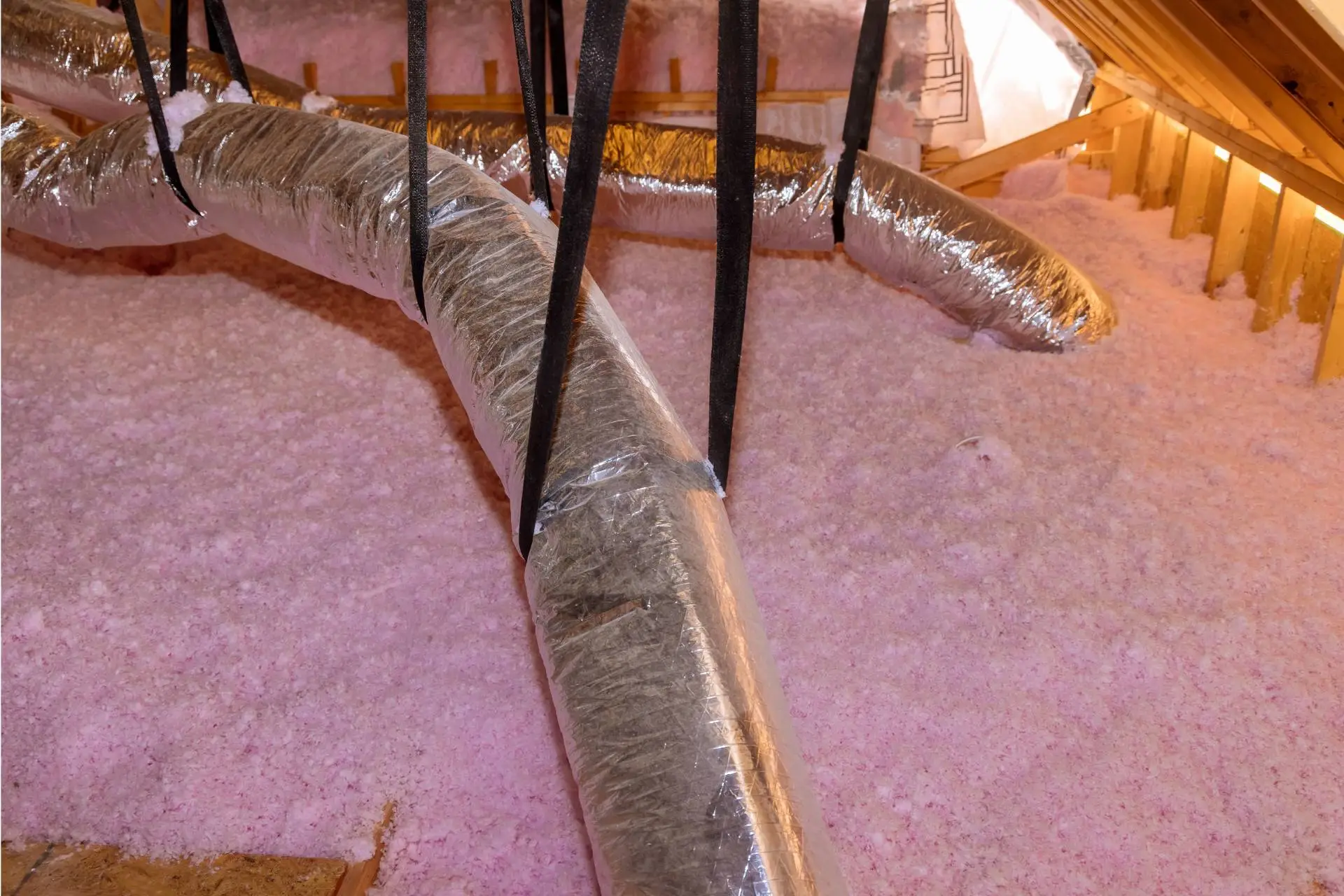
To address temperature imbalances caused by a home addition, consider the following strategies:
? HVAC System Evaluation:
Have an HVAC professional evaluate the capacity and functionality of your current system in light of the new addition.
They can recommend upgrades or modifications to ensure adequate heating and cooling throughout the entire home.
? Ductwork Modifications:
If the existing ductwork does not extend to the new addition or is inadequate, consider modifying or expanding the ductwork to ensure proper airflow and temperature control.
? Insulation Upgrades:
Improve insulation in the new addition to minimize heat transfer and maintain a consistent temperature.
This includes insulating walls, ceilings, and windows to reduce heat gain.
? Additional Ventilation:
Install additional vents or fans in the new room to enhance airflow and promote better temperature distribution.
? Zoning Adjustments:
If the home has a zoning system, ensure that the new addition is properly integrated into the zoning configuration, allowing for independent temperature control in the added space.
The addition of a new room to a home can inadvertently lead to temperature imbalances, with the added room being hotter than the others.
Inadequate HVAC capacity, inefficient ductwork, sun exposure, ventilation challenges, and zoning considerations all contribute to this imbalance.
By evaluating and addressing these factors through HVAC system modifications, ductwork adjustments, insulation upgrades, improved ventilation, and zoning adjustments, homeowners can restore temperature balance and create a comfortable environment throughout their homes, including the new addition.
❄️ Conclusion to Why Is My Room So Hot

Having one room that’s consistently hotter than the rest of the house can be frustrating.
Still, with a proper understanding of the reasons behind it and appropriate solutions, you can achieve a more comfortable home environment.
By addressing issues such as restricted airflow, ductwork problems, sunlight exposure, thermostat location, dirty air filters, poor insulation, and managing electronics and appliances, you can effectively tackle the problem of a hot room and create a more balanced and comfortable living space.
✋ Want to learn more about your home’s air conditioning system? Check out our other HVAC articles!
Dealing with other common AC problems? Check out: Top 18 Common AC Problems and Solutions.
[ad_2]
Source_link


